MetaverCE

Cloud Engineering in the Metaverse
Boosting the Digital Transformation through Immersive Collaboration
Cloud Engineering augments software development with techniques to control various quality aspects beyond functionality, e.g., reliability, maintainability, availability, and scalability. Discussing these quality goals is at the heart of cloud engineering and an inherently collaborative process among all stakeholders. The Metaverse is a great space for these discussions. It facilitates the exchange of stakeholders on various levels, supporting the definition of the right goals and their achievement.
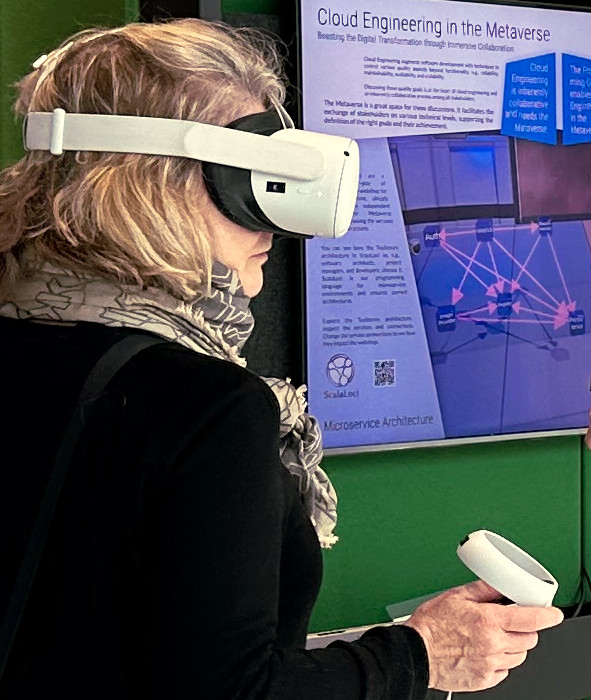
In the Programming Group, we thrive to advance cloud engineering technology. The Metaverse enables new discussion rooms and interactions with our technologies. In our MetaverCE app, we demonstrate two use cases at different levels in the software production process, illustrating how the Metaverse can boost stakeholders’ productivity through novel visualization, interaction, and communication possibilities.
Microservice Architecture
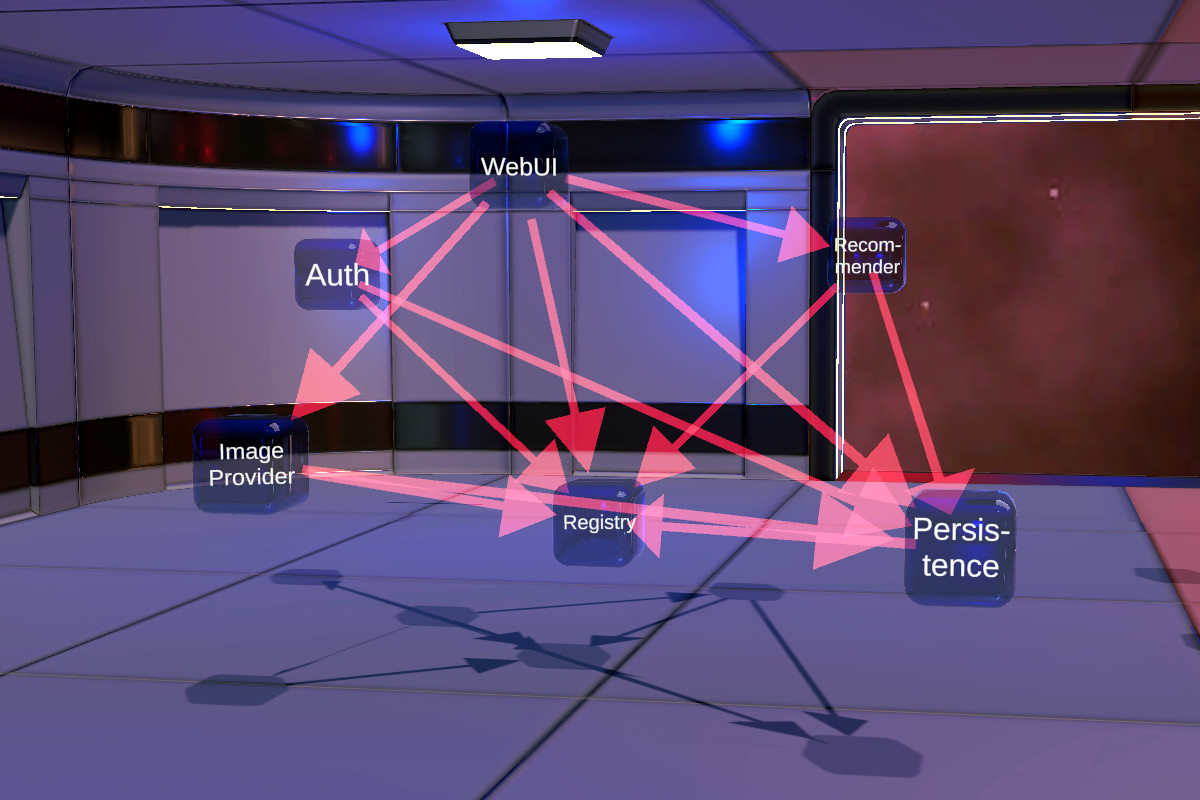
Modern systems are a complex inter-play of services. A simple webshop for tea, the TeaStore, already consists of six independent services. The Metaverse facilitates discussing the services and their interactions. You can see here the TeaStore’s architecture in ScalaLoci as, e.g., software architects, project managers, and developers, discuss it. ScalaLoci is our programming language for microservice environments and ensures correct architectures. Our MetaverCE app allows to explore the TeaStore’s architecture, inspect the services and connections, and change the service connections to see how they impact the webshop.
Application Deployment
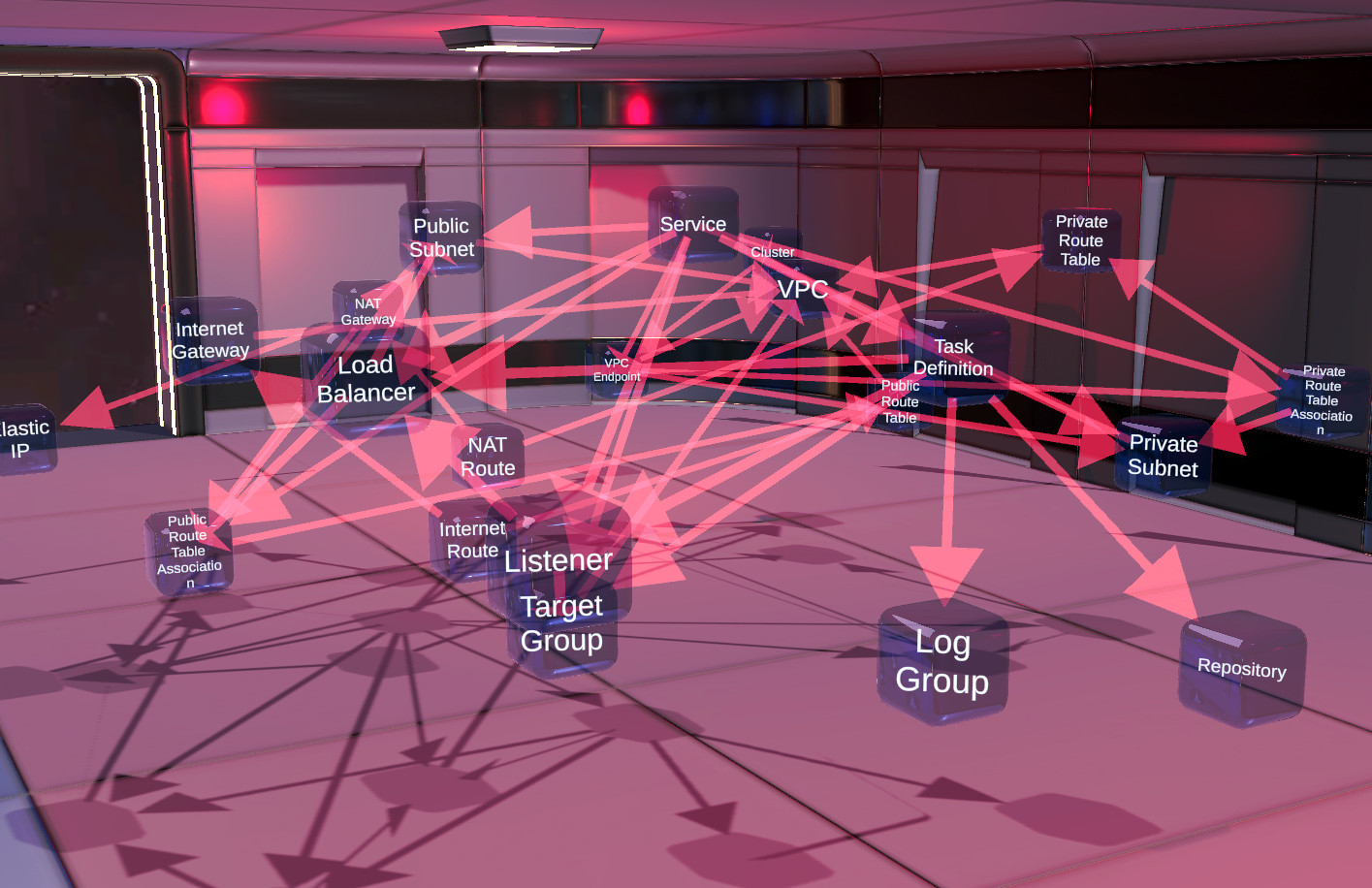
After the development, operators have to deploy services. These deployments are complex – even for a single service – but crucial for the services’ correct function. The Metaverse allows operators to inspect and discuss their deployments. You can see here the deployment of the TeaStore’s WebUI service in µs. Boxes are resources that have to be created and the arrows are dependencies between them. µs is our Infrastructure as Code tool for deployments in DevOps organizations. Our MetaverCE app allows to explore the WebUI’s resource graph, inspect the resources and their dependencies, and change the dependencies to see how they impact the webshop.
The App and Exhibit
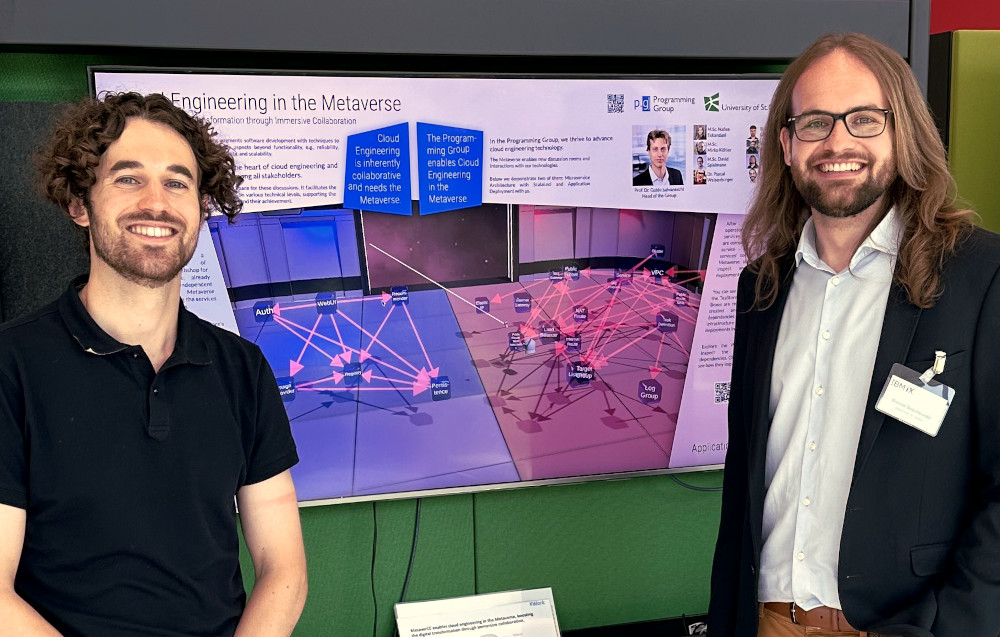
MetaverCE is a Unity based VR experience, allowing multiple users to work in the same space over network. It visualizes the domain model graphs and enables users to explore and interact with them. Users can move around freely, point at nodes to explore details about them, remove and add arcs between nodes, and explore the effects of the manipulations. We currently explore integrating AI assistance, allowing users to talk with modern AI systems, which can explain concepts, answer questions about the model, and change the model according to the user’s prompt.
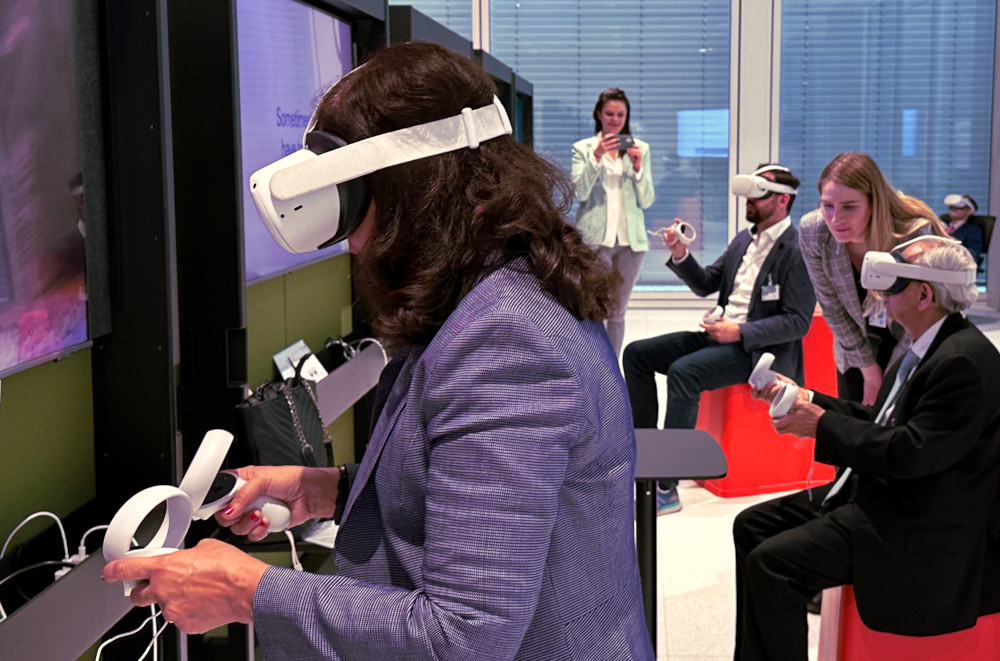
For more information, a personal demonstration, feedback and discussions, please contact Daniel Sokolowski.
MetaverCE can be experienced daily at the Metaverse exhibits of the Institute of Retail Management of the University of St. Gallen:
- May 2023 at the Metaverse Discovery Grid at SQUARE (University of St. Gallen).
- October 2023 at the Metaverse Exhibit at the Gottlieb Duttweiler Institute in Zürich.
- November 2023 at the Metaverse Discovery Grid at SQUARE (University of St. Gallen).